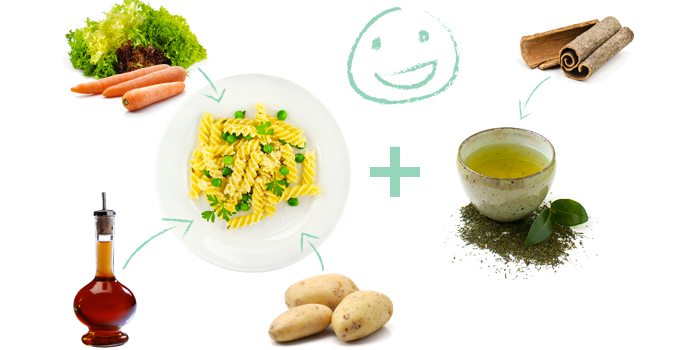
The glycemic index (GI) of foods has a great influence on weight gain.
Many successful diets are also based on controlling the glycemic index of the foods in a meal.
As a reminder, the more quickly a food causes insulin secretion, after its ingestion, the more its glycemic index is said to be “high”. There are now tables providing the GI (glycemic index) of most foods. The basic index is 100 (measure of white bread). Foods with an index above 70 are considered to be consumed sparingly and foods below 50 are considered to be beneficial for achieving a healthy weight.
Diets and diets based on this principle allow you to enjoy a large part of your favorite meals and lose 60% more fat and maintain the new weight more easily, compared to other programs. These results have been demonstrated by research from the University of Toronto. For their part, researchers from the Miami School of Medicine, University of Florida, say that the first few inches lost, following the glycemic index control program, are lost around the waistline.
When the insulin level is stabilized, there are many chemical and hormonal changes in abdominal fat.
By following these recommendations and based on the glycemic index tables, it would be necessary to limit or even eliminate foods with too high a glycemic index from your meals.
For many people this can be hardship. Deprivation in a weight control program is not the best thing. This can often lead to failure, by abandoning the program followed.
It is, however, possible to consume most of your favorite foods, while maintaining a reasonable glycemic index, promoting weight loss. In this case we are no longer concerned with the individual glycemic index of the food, but with the average of the glycemic index of the entire meal. You should keep your meals below the threshold of an average GI of 50 or less.
4 Proven Ways To Control The Average Glycemic Index Of Your Meal
1- Combine a high GI food with a very low GI food
You can lower the glycemic index of your meal by 33%. For example white bread, white rice, pasta, have a fairly high GI. Combine them with a few grams of a protein food, for example: lean meat, low-fat cheese, fish, poultry without the skin. Peanut butter, olive oil, or even apple slices, will be effective in lowering the GI of your meal.
2- Start the meal with a salad seasoned with 4 teaspoons of wine or cider vinegar.
This simple measure will reduce the rate of rise in blood glucose by 30%. This is the discovery made by a team of Australian researchers. Acids appear to slow the absorption of carbohydrates. Other acids can also be used, lemon juice and some marinades. Wine vinegar would seem to be the best choice, however.
3- Add beans to your meal.
Starches seem to be difficult to absorb in the presence of chickpeas, lentils and other beans. It is probably their high fiber content that is the cause. You can add them in your salads or in rice, pasta, etc.
4- Eat the different food groups in a precise order
Add some fat to your starter dish. Whatever dish (the best choice would be salad or other vegetables) add nuts, almonds, unsweetened or salted peanuts, olive oil or a few small pieces of cheese. Researchers from Mount Sinai School of Medicine in New York believe that fat at the start of a meal slows the absorption of carbohydrates in the body and therefore reduces the rise in blood glucose levels responsible for the intake of weight.
Follow your meal with a protein. Proteins have an almost zero GI. In addition, according to studies, consuming protein before carbohydrates, reduces the total GI of the meal by almost 100%.
Consume high GI foods at the end of the meal. Research has shown that doing this reduces insulin demand by almost 50%.